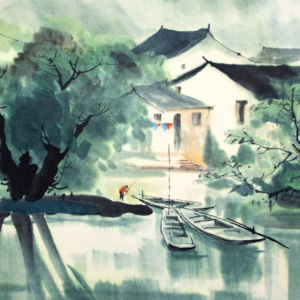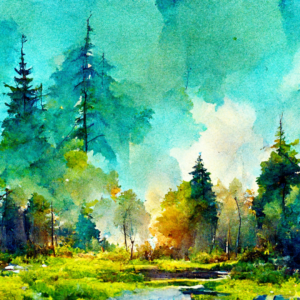Artists often seek inspiration from various sources, but nature serves as a timeless muse that sparks creativity and innovation. The intricate designs, colors, and forms found in the natural world offer a rich palette for artistic expression. Whether through the delicate details of a flower or the sweeping vastness of a landscape, the elements of nature can transform an artist’s vision into a profound experience.
Drawing from the natural environment influences not only the aesthetic aspects of art but also fosters a deeper connection to the world around us. By observing the delicate balance of ecosystems, artists can cultivate a sense of harmony and sustainability in their work. This approach not only enriches their creations but also encourages conversations about the importance of preserving our environment.
Embracing the inspiration found in nature can lead to unique artistic interpretations that resonate with audiences. Artists who tap into this source often find renewed passion and purpose as they not only create visually compelling pieces but also convey messages rooted in the beauty and fragility of the natural world.
Interplay Between Art and Nature
Art and nature have a longstanding relationship that has inspired countless creators. This section explores historical perspectives and contemporary approaches that highlight this vital connection, demonstrating how artists translate natural elements into their work.
Historical Perspectives
Throughout history, artists have drawn inspiration from the natural world. Claude Monet’s Water Lilies series exemplifies this bond. Monet’s impressionistic style captures the light and movement of water, emphasizing the delicate beauty of lilies in their natural habitat.
Similarly, Vincent van Gogh’s vibrant use of color in paintings like Starry Night reflects the dynamic qualities of nature. His swirling skies evoke both tranquility and turbulence, illustrating how emotion can be intertwined with natural imagery.
In many cultures, nature has served not only as a subject but also as a medium. Indigenous art often incorporates materials from the environment, showcasing the deep respect for nature that has characterized traditional artistic practices.
Contemporary Approaches
Modern artists continue to explore the interplay between art and nature. Georgia O’Keeffe is renowned for her floral paintings that magnify the beauty of individual blossoms, inviting viewers to appreciate the intricacies of the natural world. Her work often blurs the lines between abstraction and representation.
Andy Goldsworthy’s environmental art showcases nature as both a canvas and a subject. He uses natural materials like leaves, stones, and ice to create temporary installations, emphasizing the transience of art and life. These works encourage a dialogue about environmental conservation.
Contemporary art movements increasingly focus on the environment, addressing ecological issues through various mediums. Nature-inspired installations and land art invite viewers to reconsider their connection to the ecosystem, reinforcing the ongoing significance of art in communicating vital messages about nature.
Cultivating Creativity Through Nature
Nature serves as a rich source of inspiration for artists, enhancing the creative process by introducing varied elements, materials, and textures. By exploring the outdoors, artists can engage with their surroundings to fuel creativity and refine their skills. The following sections discuss how natural elements, outdoor sketching, and the use of natural materials can enhance artistic expression.
The Influence of Natural Elements
Natural elements impact artistic creativity significantly. The colors, patterns, and forms found in nature can inspire unique artistic ideas. For example:
- Colors: The vibrant hues of flowers or the deep greens of forests offer a palette that can influence an artist’s choices on canvas.
- Patterns: The intricate patterns of leaves or the formations of clouds can serve as motifs in various artworks.
Engaging with these elements allows artists to draw direct connections between nature and their creative visions. Observing the subtleties of natural phenomena can encourage more dynamic and thoughtful compositions.
Embracing Outdoor Sketching
Outdoor sketching helps artists escape the confines of traditional studio settings. Being immersed in nature allows for direct observation and engagement with the environment. Artists often find that:
- Fresh Inspiration: Sketching outdoors can prompt spontaneous ideas based on immediate surroundings.
- Improved Observation Skills: Capturing details in real time enhances an artist’s ability to translate what they see onto paper.
A sketchbook becomes a vital tool, documenting these experiences and ideas. Each outdoor session helps cultivate a stronger connection to one’s artistic practice.
Natural Materials and Textures
Utilizing natural materials can elevate an artist’s work by adding depth and authenticity. Artists can experiment with various textures that nature offers, such as:
- Wood: Using branches or bark can create unique mixed-media pieces.
- Fabrics: Natural fibers can be dyed and textured to add layers to textile art.
Incorporating these materials allows for a tactile experience, fostering connections between the artwork and its organic origins. Artists who embrace the use of natural elements not only expand their toolkit but also deepen their understanding of the creative process.
The Aesthetics of Nature in Art
Nature’s aesthetics provide a rich source of inspiration for artists, characterized by vibrant colors, diverse shapes, and breathtaking landscapes. This connection invites creativity and drives an appreciation for the natural beauty surrounding us.
Colors and Shapes of the Natural World
Nature exhibits a vast array of colors, from the deep greens of trees to the vibrant hues of flowers. These colors evoke emotions and can significantly enhance an artwork’s impact. Artists can utilize palettes inspired by nature to create harmonious compositions.
Shapes in nature are equally diverse and compelling. The fluid lines of animal forms, the geometric patterns of leaves, and the organic curves of landscapes all offer unique opportunities for artistic interpretation. By studying these shapes, artists can incorporate them into their work, creating pieces that resonate with the viewer.
Mirroring Nature’s Diverse Landscapes
From serene meadows to rugged mountains, landscapes are a vital aspect of nature’s beauty. Artists can capture these settings in various mediums, allowing them to reflect personal experiences and feelings tied to specific environments. The essence of landscapes often inspires narratives that connect audiences to their surroundings.
Wildlife also plays a crucial role in depicting nature’s diversity. Illustrating animals within their habitats adds a layer of complexity to the artwork, promoting a deeper understanding of ecological relationships. Such representations remind viewers of Earth’s interconnectedness and the beauty of its inhabitants.
Sustainability and Environmental Consciousness
Artists often draw inspiration from nature, which can lead to a stronger commitment to sustainability and environmental concerns. This connection fosters a deeper appreciation for the preservation of natural habitats, prompting individuals to advocate for conservation through their work.
Artistic Advocacy for Conservation
Art serves as a powerful platform for raising awareness about environmental issues. Many artists use their creativity to highlight the beauty of natural environments, motivating others to take action.
- Installations that incorporate recycled materials can challenge perceptions about waste.
- Paintings and sculptures that reflect endangered species emphasize the urgency of conservation efforts.
By visually representing the impacts of climate change and habitat loss, artists can inspire audiences to engage with these critical issues. The emotional resonance of art can effectively communicate the importance of protecting the environment.
Reflecting on Environmental Concerns
Artists frequently explore themes of climate change and environmental degradation in their work. By capturing the distinct qualities of nature, they illuminate the fragility of ecosystems.
- Themes of decay in art might represent deforestation or pollution.
- Imagery of thriving ecosystems serves as a reminder of what is at stake.
Through their creations, artists encourage viewers to reflect on their relationship with the environment. This reflection can lead to a heightened awareness of environmental concerns and foster a desire for active participation in preserving nature for future generations.





